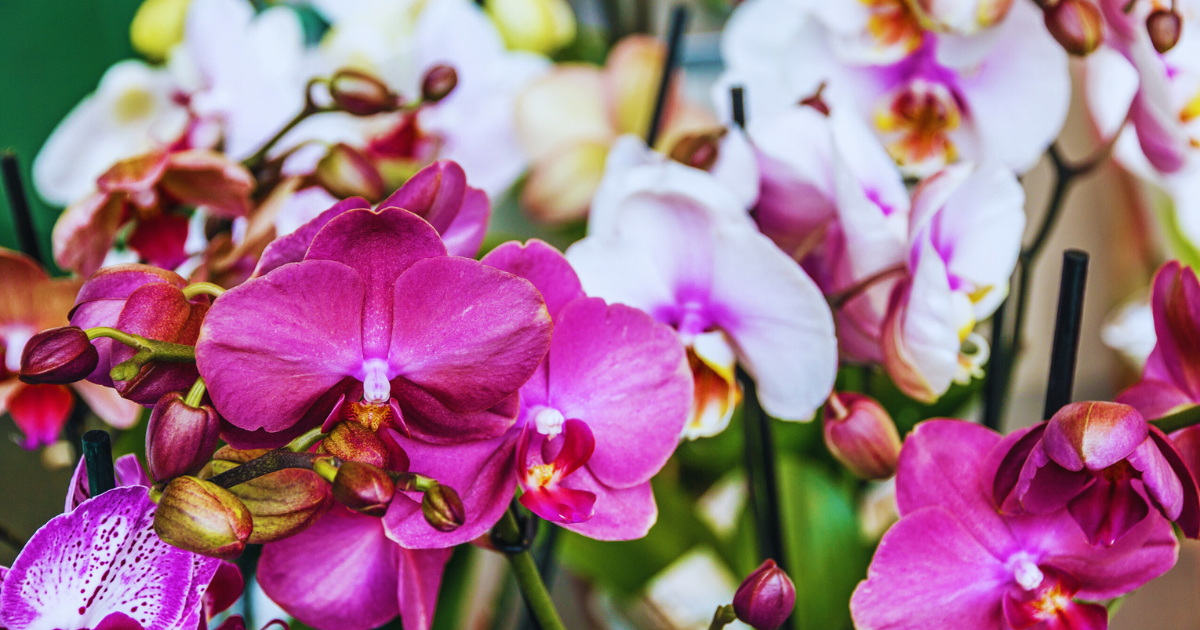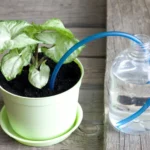Orchids are captivating plants that have intrigued gardeners and plant enthusiasts for centuries with their exotic blooms and diverse varieties. One of the most common questions among orchid lovers is whether these plants bloom in warm weather. The short answer is yes—many orchids do thrive and bloom in warmer temperatures. However, the blooming success of orchids depends on understanding their specific needs and preferences, as not all orchids are the same. Temperature plays a crucial role in their blooming cycle, influencing not just when they bloom but also the quality and longevity of their flowers. Warm weather can benefit many orchids, but striking the right balance is essential, as extreme heat can pose challenges. By understanding the different types of orchids and their temperature needs, you can create the ideal conditions for your orchids to bloom beautifully in warm weather.
Let’s explore how temperature impacts orchid bloom in warm weather and what you can do to maximize your blooms.
Overview of Orchid Blooming Habits

Orchids are renowned for their unique and stunning blooms, but their blooming habits can vary significantly depending on the species and growing conditions. Generally, orchids bloom once or twice a year, though some varieties can bloom more frequently under optimal conditions. The blooming cycle of an orchid typically starts with a period of growth where the plant produces new leaves and roots. This is followed by a resting phase, which is crucial for developing flower spikes. When the orchid is ready, it will produce flower spikes that eventually develop into beautiful blossoms.
The length and frequency of blooming can vary greatly. For example, Phalaenopsis orchids, one of the most common types, can bloom for several months and sometimes re-bloom on the same spike. Dendrobium and Cattleya orchids, on the other hand, might have shorter blooming periods but are often more vibrant and fragrant.
Importance of Temperature in Orchid Blooming
Temperature plays a pivotal role in orchid blooming. It not only influences the timing of blooms but also affects the health and longevity of the flowers. Orchids are generally classified into three temperature categories: warm-growing, intermediate-growing, and cool-growing. Warm-growing orchids, such as Phalaenopsis and Vanda, thrive between 70-85°F (21-29°C) during the day and are slightly more relaxed at night. These orchids typically bloom well in warm weather, mimicking their natural tropical environments.
Cooler temperatures, especially at night, can trigger blooming in many orchid species by simulating the natural temperature drop they would experience in the wild. However, extreme temperatures—either too hot or too cold—can stress orchids, leading to poor blooming or even bud blast, where buds fail to open. Maintaining a stable and suitable temperature range is crucial for encouraging healthy blooms and prolonging the flowering period of orchids.
How Temperature Affects Blooming

Temperature Ranges and Orchid Types:
- Orchids are categorized into warm-growing, intermediate-growing, and cool-growing types based on their preferred temperature ranges.
- Warm-growing orchids (e.g., Phalaenopsis and Vanda) thrive in temperatures between 70-85°F (21 and 29°C) during the day.
- Intermediate-growing orchids (e.g., Cattleya) prefer daytime temperatures 65-75°F (18-24°C).
- Cool-growing orchids (e.g., Cymbidium) flourish below 65°F (18°C), especially at night.
Day-Night Temperature Fluctuation:
- A drop in nighttime temperatures by about 10-15 degrees compared to daytime is essential for triggering blooming in many orchid species.
- This fluctuation mimics natural conditions and signals the plant to initiate the flowering process.
Warm Temperatures and Blooming:
- Warm temperatures promote growth and blooming in warm-growing orchids, as these conditions replicate their native tropical environments.
- Consistently warm weather helps in producing vibrant and long-lasting blooms.
Cool Temperatures and Flowering Triggers:
- Cool-growing orchids require lower temperatures, especially at night, to trigger blooming.
- Without this drop, these orchids may fail to produce flowers or experience delayed blooming cycles.
Impact of Extreme Heat:
- Excessive heat can cause heat stress, leading to issues like bud blast (where buds fail to open), smaller blooms, or reduced flower longevity.
- High temperatures can also lead to dehydration, requiring more frequent watering and humidity management.
Effects of Low Temperatures:
- Temperatures that are too low can slow the growth process and delay blooming.
- Prolonged exposure to cold can damage orchid tissues, leading to poor bloom quality or no blooms.
Optimal Blooming Conditions:
- With appropriate day-night fluctuations, maintaining the ideal temperature range maximizes blooming potential.
- Understanding and adjusting temperatures according to the specific needs of your orchid type can significantly enhance blooming success.
Types of Orchids and Their Temperature Preferences
Orchids are incredibly diverse, with thousands of species adapted to various climates worldwide. Understanding the temperature preferences of different orchid types is crucial for providing the proper care and maximizing blooming potential. Here’s a breakdown of the main categories of orchids based on their temperature needs:
Warm-Growing Orchids
- Examples: Phalaenopsis, Vanda, Dendrobium
- Temperature Preferences: These orchids thrive in warm conditions, with daytime temperatures ranging from 70-85°F (21-29°C) and nighttime temperatures around 60-70°F (16-21°C).
- Ideal Conditions: Warm-growing orchids are suited for tropical and subtropical climates. They perform best with consistent warmth and a bit of humidity, mimicking their native environments. They can tolerate slightly higher temperatures as long as humidity levels are adequate.
Intermediate-Growing Orchids
- Examples: Cattleya, Oncidium, Miltonia
- Temperature Preferences: Intermediate-growing orchids prefer moderate temperatures, typically between 65-75°F (18-24°C) during the day and slightly more relaxed at night, around 55-65°F (13-18°C).
- Ideal Conditions: These orchids are adaptable and can tolerate various conditions, making them suitable for indoor growing in many homes. They do well in environments with moderate temperature fluctuations between day and night.
Cool-Growing Orchids
- Examples: Cymbidium, Masdevallia, Odontoglossum
- Temperature Preferences: Cool-growing orchids thrive in cooler temperatures, ideally between 50-65°F (10-18°C) during the day and even cooler at night, around 45-55°F (7-13°C).
- Ideal Conditions: These orchids are often found in mountainous regions and prefer a much more relaxed environment. They require significant drops in nighttime temperatures to trigger blooming and are less tolerant of heat and high humidity.
Adapting Care to Temperature Needs

- Adjusting Conditions: To help orchids thrive, it’s important to mimic their native temperature conditions as closely as possible. For warm-growing types, ensure they get plenty of warmth and moderate humidity. Maintaining cooler temperatures, especially at night, is vital for cool-growing orchids.
- Monitoring and Adjusting: Regularly monitor temperature conditions, particularly indoors, where heating or air conditioning might alter the natural temperature fluctuations. Using fans, humidifiers, or heaters can help maintain the ideal environment for each type of orchid.
Signs That Orchids Are Thriving in Warm Weather
When orchids thrive in warm weather, they exhibit several key signs indicating they are healthy and well-cared for. Recognizing these signs can help you ensure that your orchids receive the right conditions to bloom beautifully. Here are some indicators that your orchids are flourishing in warm weather:
Healthy, Vibrant Leaves
- Appearance: The leaves of a thriving orchid should be bright green, firm, and slightly glossy. They should not be dark green, which can indicate insufficient light, or yellowing, which could suggest overexposure to sun or nutrient deficiencies.
- Texture: Firm and plump leaves are a good sign. If leaves are wrinkled or limp, it might indicate problems with watering or temperature stress.
Strong Root System
- Active Growth: Thriving orchids will have healthy, active roots that are thick, firm, and green or white. Actively growing roots often have green tips, indicating ongoing development.
- Moisture Management: In warm weather, orchids should have smooth roots. Properly hydrated roots will appear plump, healthy, silvery when dry and turn green when watered.
Regular New Growth
- Leaves and Roots: A thriving orchid in warm weather will continue to produce new leaves and roots. This active growth indicates the plant receives the right balance of light, warmth, and moisture.
- Flower Spikes: New flower spikes or the extension of existing spikes indicate that the orchid is healthy and preparing to bloom.
Blooming or Bud Formation
- Frequent Blooms: Orchids that thrive in warm weather often bloom regularly. Look for the development of flower spikes and buds, which are positive signs of healthy growth.
- Long-Lasting Blooms: In warm conditions, blooms should be vibrant and durable, with flowers that remain open and fresh for several weeks or even months, depending on the species.
Absence of Pests and Diseases
- Clean Appearance: Thriving orchids typically have leaves and roots free from pests like mites, aphids, or scale. There should be no signs of fungal infections, such as black spots or mold.
- Robust Immune Response: Healthy orchids are better able to fend off diseases and infections, which is reflected in their overall appearance.
Adaptation to Temperature Fluctuations
- Nighttime Cool-Down: Orchids that thrive in warm weather still benefit from slight nighttime temperature drops. If your orchid continues to grow and bloom with these temperature fluctuations, it’s a sign that the plant is well-adapted to its environment.
Common Warm-Growing Orchids
Warm-growing orchids thrive in higher temperatures, typically found in tropical and subtropical regions. These orchids prefer warm, humid environments and often bloom beautifully when their temperature needs are met. Here are some popular warm-growing orchids and specific care tips to help them thrive:
Examples of Orchids That Prefer Warm Weather
- Phalaenopsis (Moth Orchid)
- Description: One of the most popular and most accessible orchids to grow, Phalaenopsis is known for its long-lasting, butterfly-shaped flowers that come in a variety of colors.
- Temperature Preference: Ideal daytime temperatures are between 70-85°F (21-29°C), with nighttime temperatures around 60-70°F (16-21°C).
- Vanda Orchids
- Description: Vanda orchids are prized for their large, showy flowers and vibrant colors, including rare blues and purples in other orchids.
- Temperature Preference: These orchids thrive in temperatures of 70-90°F (21-32°C) during the day and prefer a slight drop at night.
- Dendrobium Orchids
- Description: Dendrobiums are diverse, with many species, commonly featuring cane-like stems and colorful blooms that can last for several weeks.
- Temperature Preference: They do well in warm conditions with daytime temperatures of 75-85°F (24-29°C) and cooler nights around 60-65°F (16-18°C).
- Cattleya Orchids
- Description: Known as the “Queen of Orchids,” Cattleya orchids are famous for their large, fragrant flowers and striking colors.
- Temperature Preference: They enjoy temperatures between 65-80°F (18-27°C) during the day and slightly cooler nights.
Specific Care Tips for Warm-Growing Orchids

Maintain Proper Temperature:
- Ensure that your orchids are kept within their preferred temperature ranges. Use fans or heaters if necessary to maintain a stable environment, especially in indoor settings.
Provide Adequate Light:
- Warm-growing orchids generally require bright, indirect light to bloom well. East or south-facing windows are ideal, but avoid direct sunlight, which can scorch the leaves.
Humidity Control:
- Warm-growing orchids thrive in high humidity, typically around 50-70%. Use a humidifier, mist the plants regularly, or place them on a humidity tray to maintain the right levels.
Consistent Watering:
- These orchids prefer to be kept moist but not soggy. Water thoroughly when the potting medium is nearly dry, allowing excess water to drain away. Overwatering can lead to root rot, so ensure proper drainage.
Regular Fertilization:
- Feed your warm-growing orchids with a balanced orchid fertilizer every two weeks during the growing season (spring and summer). Reduce feeding in fall and winter when growth slows down.
Air Circulation:
- Good air circulation is essential to prevent fungal diseases and promote healthy growth. Use a small fan to keep air moving around your orchids, especially in warm and humid environments.
Potting and Medium:
- Use a well-draining orchid mix, such as bark or sphagnum moss, to provide the right balance of moisture and air. Repot every 1-2 years to refresh the medium and provide room for growth.
Monitor for Pests and Diseases:
- Keep an eye out for common pests like spider mites, aphids, and scale. Regularly inspect your plants and treat any infestations promptly with appropriate measures.
Specific Care Tips for Warm-Growing Orchids
Caring for warm-growing orchids involves creating an environment that mimics their native tropical habitats. These orchids thrive in warmer temperatures and high humidity, so following these specific care tips will help ensure they remain healthy and produce vibrant blooms.
Temperature Management
Ideal Range: Maintain daytime temperatures between 70-85°F (21-29°C) and slightly cooler nighttime temperatures around 60-70°F (16-21°C).
Avoid Extremes: Prevent temperature fluctuations and avoid exposing orchids to drafts, cold windows, or direct heat sources.
Light Requirements
Bright, Indirect Light: Provide bright, indirect light, which can be achieved with east or south-facing windows. Avoid direct sunlight, as it can scorch the leaves.
Supplemental Lighting: In low-light conditions or during winter months, consider using grow lights to ensure your orchids receive adequate light.
Humidity Needs
- High Humidity: Warm-growing orchids thrive in humidity levels between 50-70%. Increase humidity by using a humidifier, placing the pot on a humidity tray filled with water and pebbles, or regularly misting the plant.
- Avoid Excessive Moisture: Ensure good air circulation to prevent mold and mildew. Do not let the plant sit in stagnant water.
Watering Practices
- Consistent Moisture: Water your orchids thoroughly when the potting medium is nearly dry. Ensure water drains well from the pot to prevent root rot.
- Avoid Overwatering: Water less frequently in cooler months when the plant’s growth slows. Use room-temperature water and avoid using hard water with high mineral content.
Fertilization
- Balanced Fertilizer: Use a balanced orchid fertilizer (e.g., 30-10-10 or 20-20-20) every two weeks during the growing season (spring and summer).
- Reduce Feeding: Reduce fertilization in fall and winter when growth slows down. Always follow the manufacturer’s recommendations to avoid over-fertilizing.
Potting and Medium
- Well-Draining Medium: Use a potting mix designed for orchids, such as bark, sphagnum moss, or a blend of both, to ensure proper drainage and air circulation.
- Repotting: Repot every 1-2 years to refresh the medium and accommodate growth. Choose a pot with drainage holes and avoid over-potting.
Air Circulation
- Improve Airflow: Good air circulation helps prevent fungal and bacterial diseases. Use a small fan to keep the air moving around your orchids, especially in warm and humid conditions.
Monitoring for Pests and Diseases
- Regular Inspections: Check for pests like spider mites, aphids, and scale. Inspect both the top and underside of the leaves and the roots.
Treatment: Address any pest problems promptly with appropriate treatments such as insecticidal soap or neem oil. Also, monitor for signs of disease, such as leaf spots or mold, and take corrective actions as needed.
Common Problems and Solutions in Warm Weather
Warm weather can benefit many orchids, but it also presents specific challenges that must be managed to keep these plants healthy. Here are some common problems associated with warm weather and practical solutions to address them:
Heat Stress
- Problem: Excessive heat can cause orchids to suffer from heat stress, leading to symptoms such as wilting, leaf burn, or bud drop.
- Solution: Ensure that orchids are not exposed to direct sunlight, which can intensify heat. Provide adequate ventilation using fans to improve air circulation and prevent overheating. If temperatures exceed the ideal range, use shading or air conditioning to cool the environment.
Dehydration
- Problem: Warm weather increases the evaporation rate, which can lead to dehydration if the orchids are not watered adequately.
- Solution: Water orchids thoroughly when the potting medium is nearly dry, but avoid overwatering. A moisture meter monitors soil moisture levels and adjusts the watering frequency. Ensure that pots have proper drainage to prevent waterlogging.
Low Humidity
- Problem: Warm weather can lower humidity levels, detrimental to orchids that thrive in high-humidity conditions. Low humidity can lead to dry leaf tips and poor blooming.
- Solution: Increase humidity around the orchids by using a humidifier, placing a humidity tray near the plants, or regularly misting them. Aim for humidity levels between 50% and % and 70%. Avoid placing orchids directly on heating vents or in dry air.
Pests and Diseases
- Problem: Warm, humid conditions can encourage the growth of pests like spider mites, aphids, and scale, as well as fungal and bacterial diseases.
- Solution: Inspect your orchids regularly for signs of pests or disease. Treat infestations promptly with appropriate methods such as insecticidal soap or neem oil. Maintain good air circulation to prevent fungal and bacterial issues. Remove any affected plant parts and use fungicides or bactericides if necessary.
Root Rot
- Problem: Warm weather can exacerbate issues related to overwatering, leading to root rot. Symptoms include yellowing leaves, a musty smell, and mushy roots.
- Solution: Ensure pots have proper drainage and the potting medium is well-draining. Water only when the top inch of the medium is dry, and avoid letting the plant sit in standing water. If root rot is detected, remove the affected roots and repot the orchid in the fresh, well-draining medium.
Leaf Burn
- Problem: Direct sunlight or intense heat can cause leaf burn, characterized by brown or scorched leaf edges.
- Solution: Move orchids to a location with bright, indirect light instead of direct sunlight. Use sheer curtains to filter intense light if growing indoors. Regularly rotate the plant to ensure even light exposure and avoid scorching.
Reduced Blooming
- Problem: Orchids may experience reduced blooming or bud drop due to temperature fluctuations or environmental stress.
- Solution: Maintain a consistent temperature range appropriate for the orchid type. Ensure that the plant receives the right amount of light and humidity. Provide regular, balanced fertilization to support healthy blooming.
Tips for Extending Bloom Periods
Extending the bloom periods of orchids involves creating and maintaining optimal conditions to encourage longer-lasting and more frequent flowering. Here are some practical tips to help prolong the beauty of your orchids:
Provide Adequate Light
- Bright, Indirect Light: Ensure your orchids receive bright, indirect light, crucial for blooming. Too much direct sunlight can scorch the leaves, while too little light can inhibit flowering.
- Supplemental Lighting: Use grow lights if natural light is insufficient, especially during shorter daylight months or in areas with less sunlight.
Maintain Optimal Temperature
- Consistent Temperature: Keep temperatures within the ideal range for your specific orchid type. For most warm-growing orchids, maintaining daytime temperatures between 70-85°F (21-29°C) and slightly cooler nighttime temperatures.
- Avoid Temperature Fluctuations: Prevent sudden temperature changes that can stress the plant and disrupt blooming.
Manage Humidity Levels
- High Humidity: Orchids generally thrive in high humidity. To support prolonged blooming, aim for 50-70% humidity. Use humidifiers, humidity trays, or regular misting to maintain these levels.
- Proper Airflow: Ensure good air circulation to prevent excessive moisture, which can lead to fungal issues.
Regular Fertilization
- Balanced Fertilizer: Use a balanced orchid fertilizer (e.g., 30-10-10 or 20-20-20) every 2-4 weeks during the growing season to promote healthy growth and extended blooming.
- Avoid Over-Fertilizing: Follow the manufacturer’s instructions to avoid over-fertilization, which can lead to salt buildup and root damage.
Prune Spent Blooms
- Remove Dead Flowers: As flowers fade, trim off spent blooms to encourage the plant to focus its energy on new growth and potential new flower spikes.
- Careful Pruning: Use clean, sharp scissors to avoid damaging the plant. Prune flower spikes back to just above the node where the buds form.
Proper Watering
- Consistent Moisture: Water orchids thoroughly when the potting medium is nearly dry. Ensure that excess water drains away to prevent root rot.
- Adjust Watering Frequency: In warmer weather, you may need to water more frequently, but always let the medium dry out slightly between waterings.
Repotting When Needed
- Fresh Medium: Repot orchids every 1-2 years to refresh the potting medium and provide more space for growth. This can also stimulate blooming.
- Pot Size: Avoid over-potting; choose a pot size that fits the root system comfortably.
Manage Stress Factors
- Avoid Stress: Minimize factors that can stress the plant, such as sudden changes in temperature, humidity, or light conditions. Stress can lead to premature flower drop.
- Stable Environment: Create a stable growing environment to help the orchid focus its energy on sustaining blooms.
Best Practices for Ongoing Care
To ensure continued health and blooming of your orchids, follow these best practices:
Regular Monitoring
- Inspect Plants: Regularly check for signs of pests, diseases, and overall plant health. Early detection of issues allows for prompt treatment.
- Adjust Care as Needed: Monitor the plant’s response to environmental changes and adjust care practices accordingly.
Seasonal Adjustments
- Adapt to Seasons: Adjust light, watering, and humidity levels based on seasonal changes. For example, reduce watering and fertilization during the plant’s dormant period in winter.
Clean Growing Environment
- Maintain Cleanliness: Keep the growing area clean to prevent the buildup of dust, mold, and pests. Wipe down leaves and surfaces regularly.
- Clean Pots: To promote healthy root growth, ensure pots are clean and free from algae or mould.
Proper Pollination and Seed Production
- Pollinate if Desired: If you’re interested in producing seeds, pollinate flowers carefully to ensure successful seed development.
- Monitor Seedlings: If seedlings are growing from seeds, provide appropriate care for them, including proper light, humidity, and temperature.
Seasonal Changes and Orchid Care
Orchid care varies with the seasons due to changes in light, temperature, humidity, and overall environmental conditions. Adapting your care routine to these seasonal changes ensures your orchids remain healthy and thrive year-round. Here’s a guide to managing your orchids through each season:
Spring
1. Increase Light Exposure
- Adjustment: As days lengthen, increase your orchids’ light exposure. Move them to brighter locations or supplement them with grow lights if necessary.
- Action: Monitor light levels and avoid direct sunlight that can cause leaf burn.
2. Adjust Watering Frequency
- Increase Watering: Spring is a period of active growth for many orchids. Water more frequently as the medium dries out faster with increased light and warmer temperatures.
- Action: Ensure pots have proper drainage to prevent root rot.
3. Begin Fertilization
- Feed Regularly: Start a regular fertilization schedule with a balanced orchid fertilizer every 2-4 weeks to support new growth and blooming.
- Action: Follow the recommended dosage to avoid over-fertilizing.
4. Repotting
- Consider Repotting: Spring is an ideal time to repot orchids that are root-bound or whose potting medium needs refreshing.
- Action: Choose a pot size that accommodates the root system comfortably and use a fresh, well-draining potting medium.
Summer
1. Manage Heat and Humidity
- Temperature Control: Protect orchids from excessive heat and maintain temperatures within the ideal range for their type.
- Humidity: High humidity is often beneficial. Use a humidifier or humidity trays to keep humidity levels between 50% and 70%.
2. Maintain Consistent Watering
- Regular Watering: Water orchids thoroughly and consistently, as increased temperatures and light can lead to faster drying of the potting medium.
- Action: Check the moisture level regularly to avoid overwatering or underwatering.
3. Monitor for Pests
- Inspection: Warm, humid conditions can promote pests and diseases. Inspect your orchids regularly for signs of pests like spider mites and aphids.
- Action: Treat infestations promptly with appropriate remedies.
4. Encourage Blooming
- Support Blooms: Provide bright, indirect light to promote blooming. Avoid direct sunlight, which can cause stress and harm to the plant.
- Action: Continue with regular fertilization to support the blooming process.
Fall
1. Adjust Light Levels
- Decrease Light: As days shorten, adjust light exposure for orchids. Ensure they still receive adequate light, but be mindful of reduced daylight.
- Action: Use supplemental lighting if necessary to maintain light levels.
2. Reduce Watering
- Water Less Frequently: Reduce watering frequency with cooler temperatures and reduced growth rates. Ensure that the potting medium dries out slightly between waterings.
- Action: Avoid letting the plant sit in stagnant water to prevent root rot.
3. Modify Fertilization
- Reduce Feeding: Reduce fertilization as the plant’s growth slows down in preparation for winter.
- Action: Based on the plant’s response, feed orchids every 4-6 weeks or as needed.
4. Prepare for Winter
- Check Temperature: Ensure orchids are not exposed to drafts or cold temperatures. Maintain a stable indoor environment.
- Action: Use heaters or insulation to keep temperatures within the ideal range.
Winter
1. Manage Light and Temperature
- Provide Adequate Light: Days are shorter, so provide additional light if necessary. Place orchids near south-facing windows or use grow lights.
- Temperature: Maintain temperatures within the preferred range for your orchid type, avoiding extreme cold and drafts.
- Action: Use a thermometer to monitor indoor temperatures and adjust as needed.
2. Adjust Watering and Humidity
- Water Less: Water less frequently during winter as the plant’s growth slows. Ensure the potting medium dries out more between waterings.
- Increase Humidity: Use a humidifier or humidity trays to prevent the dry indoor air from causing issues.
- Action: Regularly check humidity levels and adjust as needed.
3. Monitor for Issues
- Check for Problems: Watch for signs of stress, such as leaf drop or slow growth, and address any issues promptly.
- Action: Maintain cleanliness and ensure good air circulation to prevent fungal and bacterial problems.
FAQ
How often should I water my orchids in warm weather?
In warm weather, orchids require more frequent watering due to increased evaporation. Water your orchids when the top inch of the potting medium feels dry. Ensure that the potting medium is thoroughly moistened and that excess water can drain. Be careful not to overwater, as this can lead to root rot.
What is the ideal temperature range for orchids during winter?
During winter, most orchids prefer temperatures between 60-70°F (16-21°C) during the day and slightly cooler at night. Avoid exposing orchids to cold drafts or extreme temperature fluctuations. Maintain a stable indoor temperature to support the plant’s health and growth.
How can I increase humidity for my orchids in dry indoor environments?
Use a humidifier or place a humidity tray filled with water and pebbles near your orchids to increase humidity. You can also mist the plants regularly with water. Ensure good air circulation to prevent excessive moisture buildup and fungal issues.
Why are my orchid leaves turning yellow?
Yellowing leaves can indicate issues, including overwatering, underwatering, or poor light conditions. Check the watering schedule and ensure that the potting medium is well-draining. Additionally, verify that the orchid receives the right amount of light and avoid placing it in direct sunlight, which can cause leaf burn.
How can I extend the blooming period of my orchids?
To extend the blooming period, provide bright, indirect light and maintain optimal temperature and humidity levels. Regularly fertilize your orchids with a balanced orchid fertilizer and avoid exposure to temperature extremes. Prune spent blooms encouraging the plant to focus on new growth and potential new flower spikes.
Conclusion
Successful orchid care involves adapting to seasonal changes and addressing their unique needs. Adjusting light, temperature, humidity, and watering practices throughout the year ensures that your orchids remain healthy and bloom beautifully. Regular monitoring and timely adjustments will help you manage common issues and extend bloom periods. With attentive care and the right environment, your orchids can thrive and bring you joy with their stunning and resilient flowers, season after season.
Read to know more: Are Orchids Safe for Cats? Everything You Need to Know







